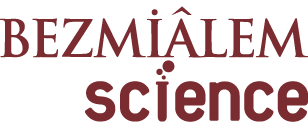ÖZET
Koronavirüs hastalığı-19 (COVİD-19) hastalığına neden olan şiddetli akut solunum yolu enfeksiyonu CoV-2 (SARS-CoV-2) virüsünü tespit etmek amacıyla çeşitli testler kullanılmaktadır. Günümüzde revers-transkripsiyon tepkimesiyle birleştirilmiş Realtime (RT)-polimeraz zincir reaksiyonu (PZR) testi SARS-CoV-2’yi teşhis etmek için kullanılan altın standart yöntemdir. Bu yöntem, örnekte sadece SARS-CoV-2’nin varlığını değil aynı zamanda virüs miktarınıda belirlediği için kantitatif PZR (RT-qPZR) olarak anılmaktadır. Virüse özgül primerlerin kullanılması sebebiyle testlerin özgüllüğü %100 olarak kabul edilmektedir. Bu test için nazofarengeal ve boğaz gibi üst solunum yollarından alınan sürüntü örnekleri, balgam ve bronkoalveoler lavaj sıvısı gibi alt solunum yollarına ait alanlardan alınan örnekler, rektal sürüntü, dışkı, serum ve idrar örnekleri tercih edilmektedir. Örnek alma ve test çalışılması sırasında kişisel koruyucu ekipmanların sağlık çalışanları tarafından doğru kullanımı önemlidir. SARS-CoV-2 tanısı için RT-qPZR testine ilave olarak kullanılan hızlı antijen testleri teorik olarak hızlı sonuçlanma zamanı ve düşük maliyetli olmasından dolayı avantaj sağlar ancak bu yöntemin duyarlılığının oldukça düşük olduğu bilinmektedir. Hücre kültürü SARS-CoV-2 tespit etmek amacıyla kullanılabilir ancak sonuçların uzun zaman alması, emek gerektirmesi ve uzmanlık isteyen bir yöntem olması nedeniyle tanı amaçlı ve rutin olarak gerçekleştirilmez. Serolojk testler bu hastalığın tanısında ve takibinde sıklıkla kullanılmaktadır. Bunlar esas olarak ELISA, kemilüminesans testi (CLIA), immünofloresan testi (IFA), western blot (WB), protein microarray (mikrodizi) ve nötralizasyondur. ELISA bazlı immünoglobulin (Ig)M ve IgG antikor testlerinin, COVİD-19 tanısında %95’ten fazla özgüllüğe sahip olduğu belirtilmektedir. SARS-CoV-2 ile enfekte olan hastalarda en erken 7-11 gün sonra antikor cevabı geliştiği için hastalığın akut tanısında yararlı değildir. Virüs nötralizasyon testleri antikorların işlevselliğini ortaya koyması nedeniyle diğer serolojik testlere göre daha anlamlı sonuçlar ortaya koymaktadır.



